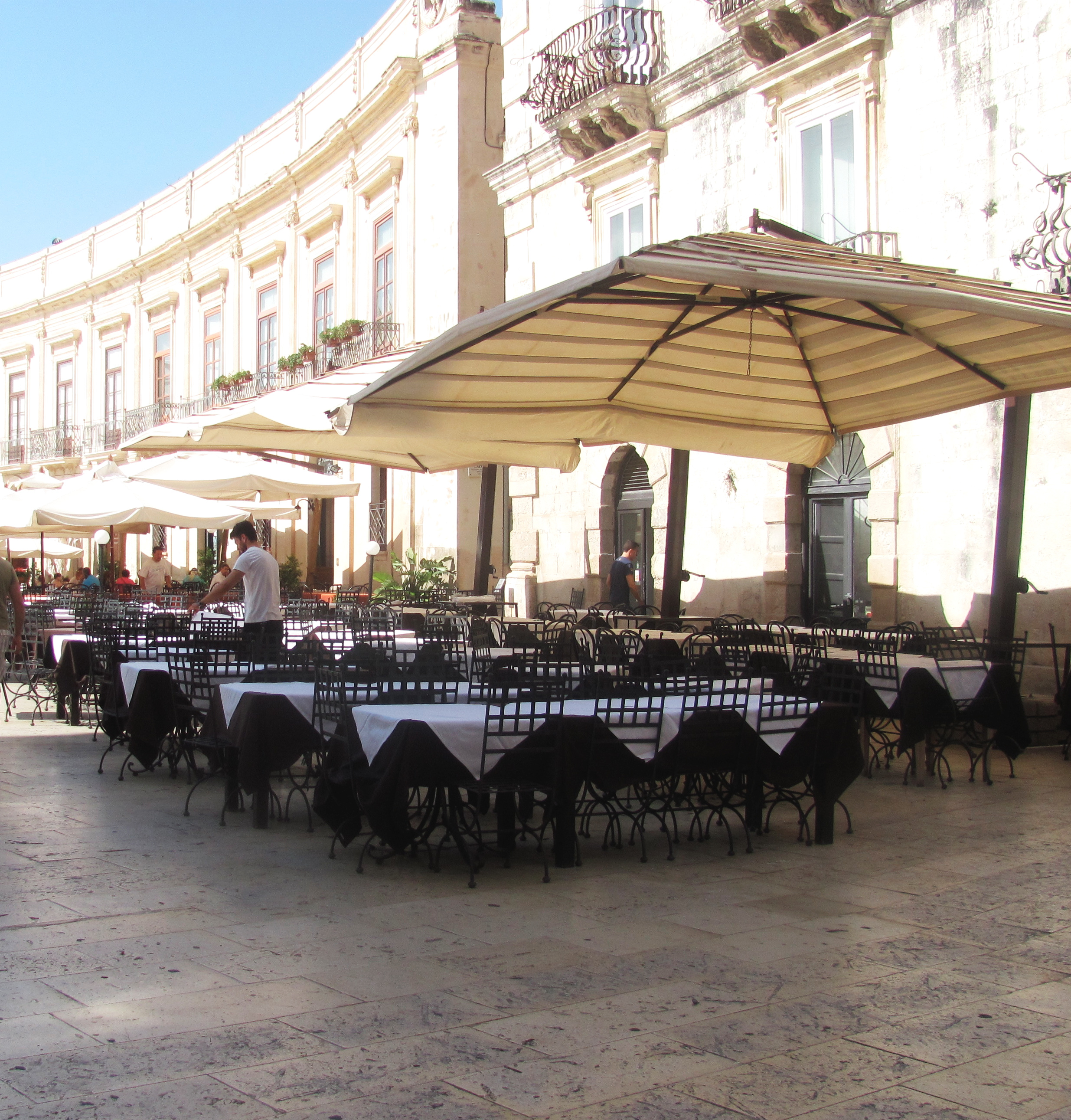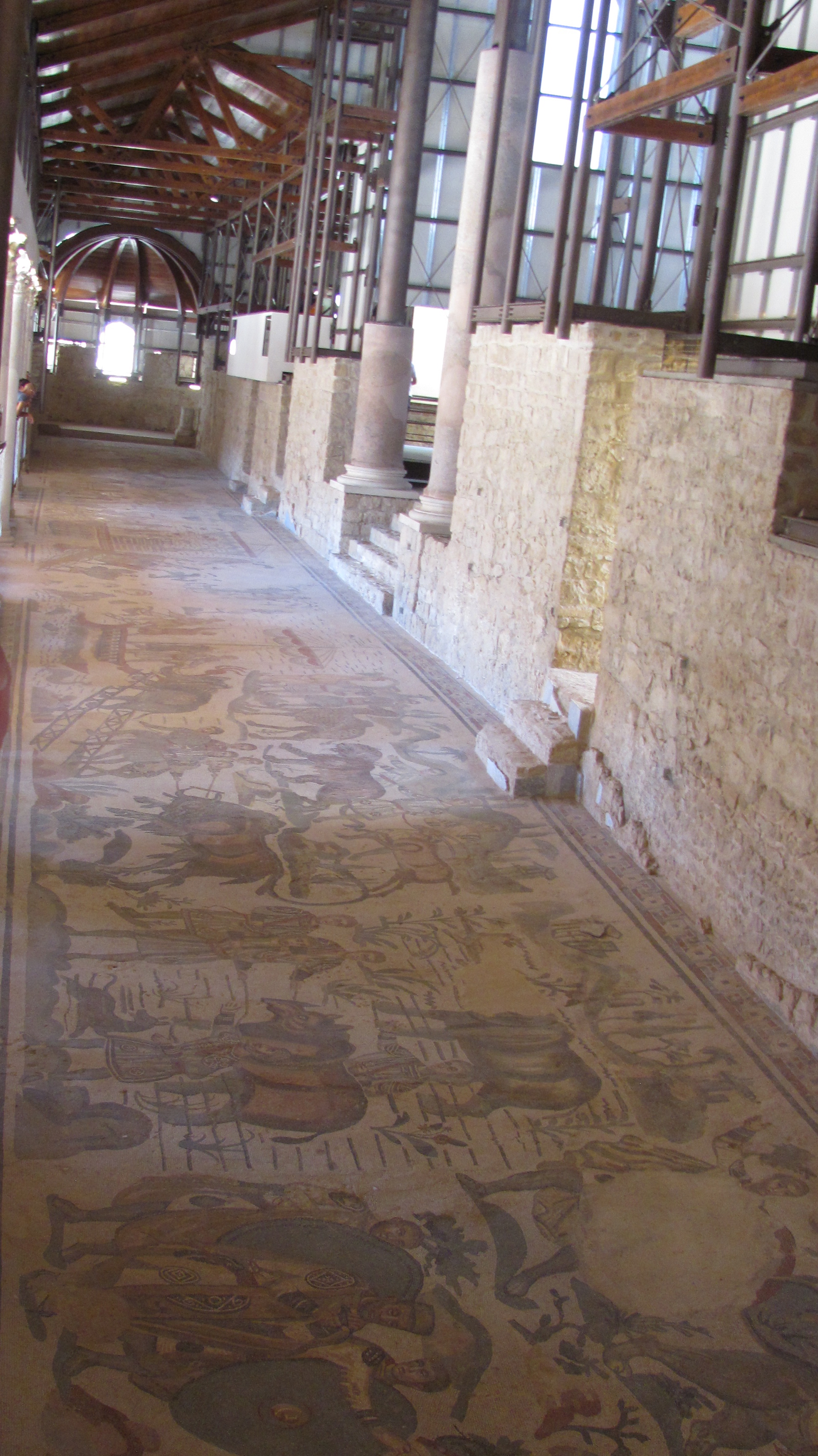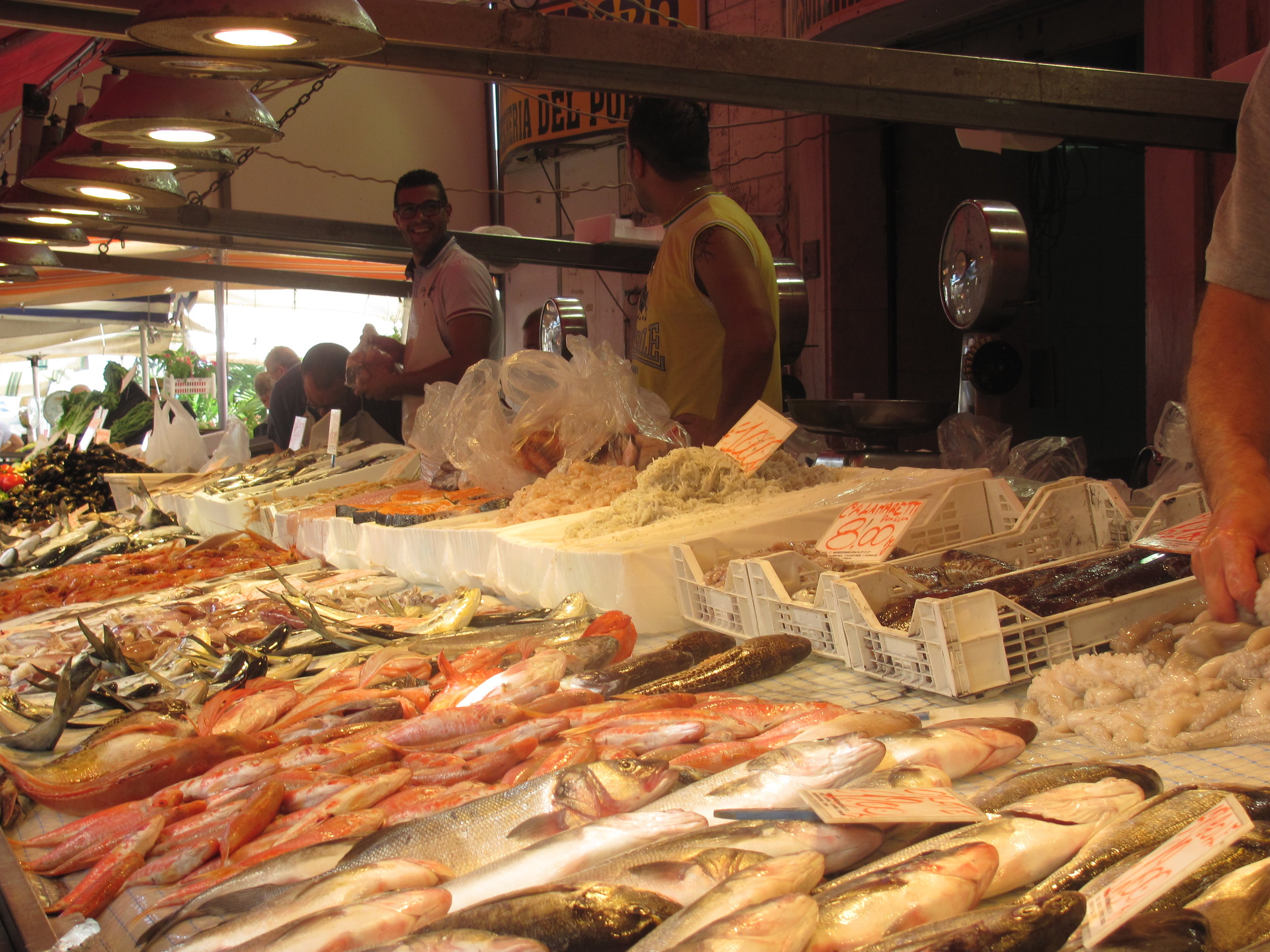As Dave prepares for another Sicily tour I can’t help but be jealous. Sicily is sensational.
Sicily is a new favourite spot to combine battlefield tours, spectacular feasts and unparalled cultural discoveries. One of the highlights of our last visit there was discovering the UNESCO world site, Villa Romana del Casale, a 4AD Roman villa that has the world’s best examples of floor and wall mosaics. It was one of those experiences when you travel where you are overwhelmed by both history and beauty in one experience.
Then there are the endless meals of local, fresh and tasty seasonal meals. One memorable morning was my first experience drinking a granita for breakfast outside in the sun filled piazza in Siracusa; I chose almond but could have sampled pistachio, peach, fig or bergamot – a few tourists were about and a smattering of Siciilians dropped in for a breakfast expresso and quick chat with wait staff. Travelling by car, you can see endless groves of oranges, olives and chestnuts that feature in the excellent meals that every restaurant serves. Be sure to try the Lemoncello following at least one meal – a beautiful way to mark the end of el fresco dining in the warm evening air.
As we were staying in a coastal villa and could prepare meals, a visit to Siracusa’s seafood market was a loud and colourful experience. It was hard to choose between shrimp and the fresh fish catch from the Mediterranean – so we came home with both. A woman had purchased an octopus, so fresh, it was attempting to free itself from her shopping bag.
I recommend reading the history of the Hastings and Prince Edward County regiment, known as the Hasty Pee’s in Farley Mowat’s, 1955 non-fiction (part memoir/narrative) account, The Regiment, to know more about the local connections to Canada’s contributions at World War 2 sites. Nothing beat spending the day touring Hasty P sites and then at the end of the day, throwing myself off the villa’s coastline of volcanic rocks into the warm, salty sea. Sensational.
ee





